#Cuscuses
Explore tagged Tumblr posts
Text
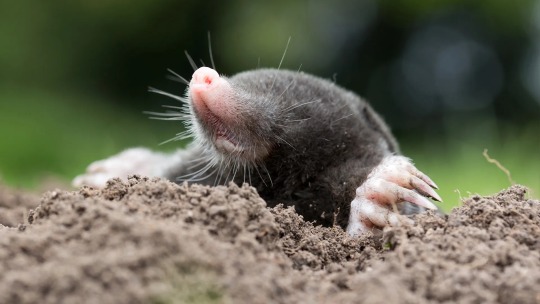
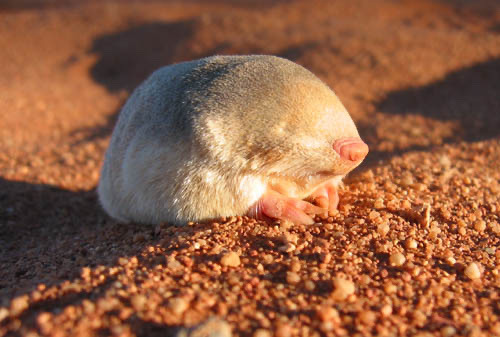
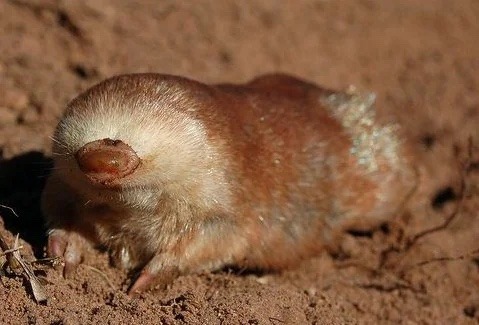
@sabertoothwalrus Now that people are interested in moles. These three moles are not related.
Top one is Laurasiatheria (same superorder as dogs, horses, bats, and hedgehogs)
Middle one is Afrotheria (same superorder as elephants, tenrecs, aardvarks, and manatees)
And the bottom one is Australidelphia (same superorder as cuscuses, quolls, bandicoots, and wallabies)
All three have convergently evolved to be moles! How cool is that!
3K notes
·
View notes
Text
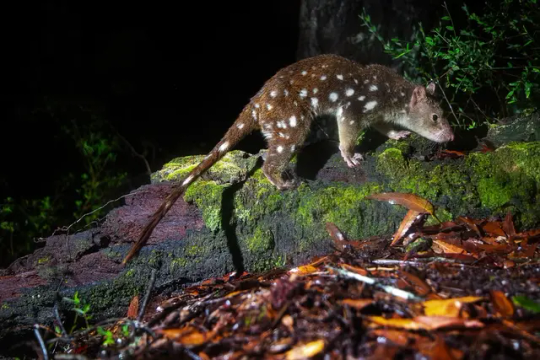
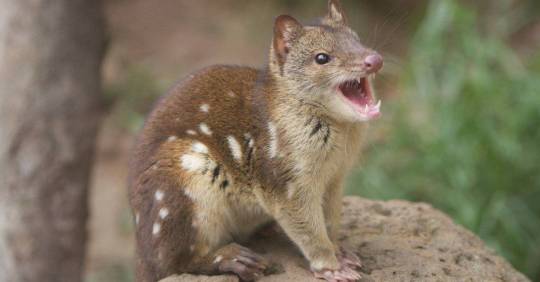
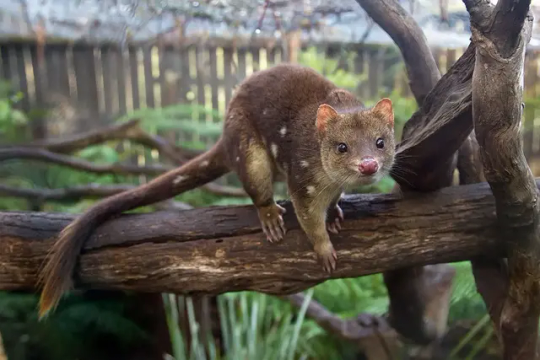
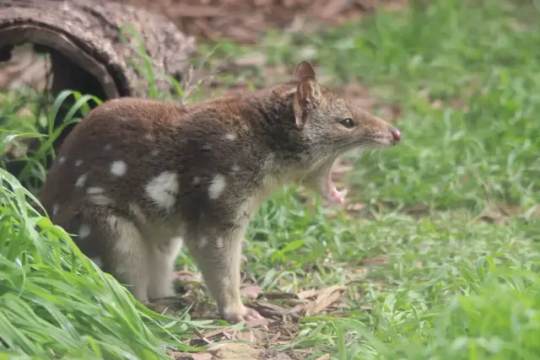
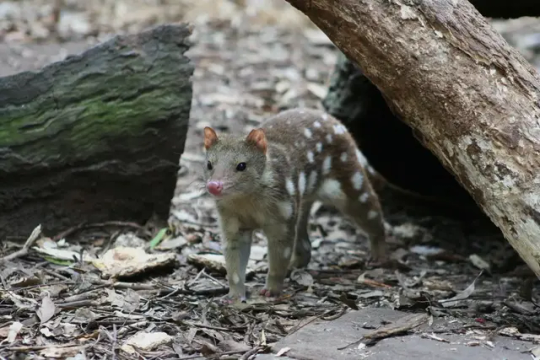

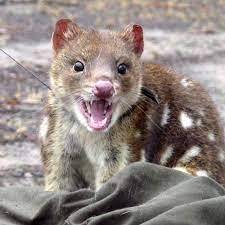

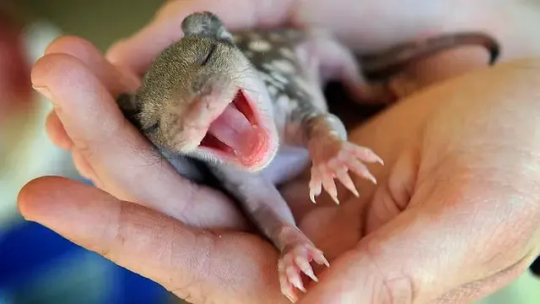
Dasyurus maculates, better known as the tiger quoll, the spotted-tail quoll, the spotted quoll, the spotted-tail dasyure, native cat or the tiger cat, is a carnivorous marsupial native to eastern and southern Australia and the island of Tasmania. These semi-arboreal mammals can be found in a variety of habitats including mixed dry and alpine forests, pastureland, and grasslands, but seem to prefer wetter environments such as riverine forests, rainforests and closed eucalypt forest. Tiger quolls are generally nocturnal, spending there days in dens they build in burrows, caves, rock crevices, tree hollows, hollow logs, or abandoned buildings. They emerge at night to hunt prey such as insects, crustaceans, lizards, snakes, frogs, birds, platypus, echidnas, rabbits, possums, cuscuses, gliders, bandicoots, pademelons, small wallabies, and wombats. Tiger quolls are themselves preyed upon by Tasmanian devils, masked owls, dingos, large pythons, and wedge-tailed eagles. Reaching around 27 to 45 inches (69 to 113cms) in length and 3 to 15lbs (1.3 to 7kgs) in weight, with females being a far bit smaller than males, the tiger quoll is the second largest carnivorous marsupial on earth after the Tasmanian devil. At 308 newtons the tiger quoll also sports the second most powerful bite relative to body size of any living mammalian carnivore, after the Tasmanian devil. The tiger quoll has relatively short legs, a tail as long as the rest of its body, a thick neck, and large head with an elongated rounded snout. Each foot has 5 toes with pink foot pads are ridged, an adaptation for its arboreal lifestyle. The fur is typically reddish brown, occasionally black, with a creamy white colored underside. Mating occurs from april into july. The gestation period in this species lasts for 21 days, yielding 5 young on average. The babies are then moved to the pouch of their mother, where they continue to grow for the following 12 weeks. The young become fully independent by 18 to 21 weeks of age, reach sexual maturity at 1 year, and may live up to 7 years.
#pleistocene pride#pleistocene#pliestocene pride#pliestocene#cenozoic#australia#tasmania#tiger quoll#marsupial#quoll
12 notes
·
View notes
Text
Waigeo Cuscus Spilocuscus papuensis
Cryptic and solitary marsupials, Waigeo Cuscuses cling to tree canopies on a Waigeo Island, West Papua. They are classified as vulnerable on IUCN Red List due to palm oil deforestation and mining on the tiny island where they live. Help them each time you shop and be #vegan, #Boycottpalmoil and #Boycott4WildlifeWaigeo Cuscus Spilocuscus papuensis
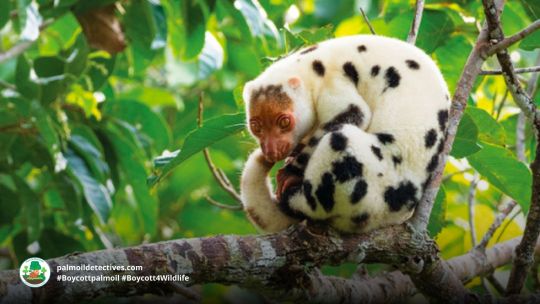
View On WordPress
0 notes
Text
IUCN Highlight
Today’s Highlight: Black-spotted Cuscus; Spilocuscus rufoniger
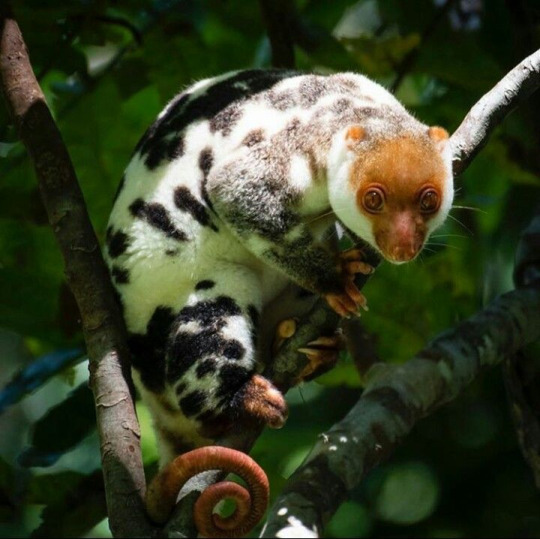
Status: Critically Endangered
Causes: Hunting and habitat loss
Habitat: Tropical forests with thick brushwood in Northern New Guinea
Diet: Fruits, leaves, nuts, small animals
Fun Facts: Being nocturnal creatures, they rest in a curled position on high branches throughout the day.
#iucn red list of endangered species#Critically endangered#Mammals#marsupials#cuscuses#Black-spotted Cuscus#Spilocuscus rufoniger
1 note
·
View note
Text



extremely Not Real animals
#i learned that cuscuses existed yesterday and i cannot stop thinking about them#marsupials are COOL marsupials are WEIRD#like look their Eyes n Tails and their TWO THUMBS#i wanna try giving birdragons some of their qualities cause they're so weird n cool#scopophobia
11 notes
·
View notes
Note
I showed my friend a picture of a cuscus earlier (one of the orange and white splotchy ones) and they said it "looks like it would taste like a creamsicle"
fun fact, if it's got spots, it's a dude!

ONLY adult male Common Spotted Cuscuses actually have the spots, but not EVERY adult male has them!



they can also be white, or cream, or rust-orange, because being a common spotted cuscus means being in charge of your own destiny for once. take THAT, Universe!
2K notes
·
View notes
Conversation
Best animals in each mammalian order
Rodentia: Naked mole rats (they're eusocial and cold-blooded, that's hardcore)
Chiroptera: Mouse-tailed bats (they got a tail!)
Soricomorpha: Cuban Solenodon (it's venomous and that's cool as hell)
Primates: Mandrills and geladas (they're Awful Hairy Men with fangs, i love that)
Carnivora: Spotted hyena (i LOVE THEM and their weird necks and legs)
Cetartiodactyla: Wild boar (i just think they're neat)
Diprodontia: Cuscuses (their FACES)
Lagomorpha: Hares (they're Big Creepy Rabbits)
Didelphimorpha: all of them except for the genus Thylamys
Dasyuromorphia: Tasmanian devils (yeah)
Afrosoricida: lowland streaked tenrec
Eulipotyphla: It turns out cuban solenodons are in THIS order and not soricomorpha so im changing the soricomorpha one to the water shrew
Cingulata: how can it not be Glyptodon?
Peramelemorphia: Bandicoots. Crash is my friend.
Scandentia: every animal in this order looks the SAME
Perissodactyla: Tapir.
Macroscelidea: i'm honestly tired of these shrew-looking things at this point but the Take A Closer Look At That Snout boy gets a pass
Pilosa: silky anteaters, they look like bad taxidermy
Monotremata: Echidna, knuckles is my friend
Proboscidea: Rhynchotherium
3 notes
·
View notes
Photo

250g (8.8 oz) Cuscuses Semen Tu Si Zi Dodder Seeds Chinese Herbs https://ift.tt/2LzmFBq
0 notes
Text
IUCN Highlights
Today’s highlight: Blue-eyed Spotted Cuscus; Spilocuscus wilsoni

Status: Critically Endangered
Causes: Hunting and habitat loss
Habitat: Dense tropical forest on the islands of Biak and Supiori in Indonesia
Diet: Leaves, nectar, fruit, flowers, eggs and small animals
Fun Facts: This specimen is known solely from two museum specimens and a pet, and has not been seen in the wild for many years
#iucn red list of endangered species#Critically Endangered#Mammals#marsupials#cuscuses#Blue-eyed spotted cuscus#Spilocuscus wilsoni
1 note
·
View note
Note
I think the black-spotted cuscus looks pretty cute but also kinda of weird....It's like a mix between a lemur and lizard.
cuscuses in general are just really strange, they're basically just gecko cats.

look at them.
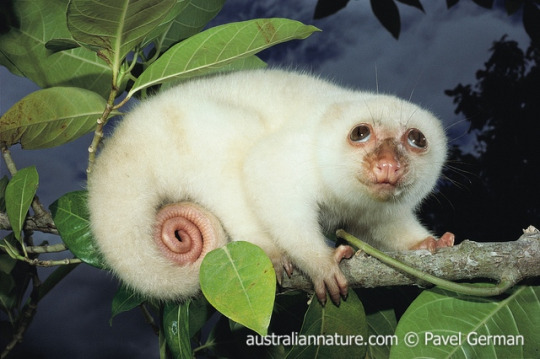
7K notes
·
View notes
Note
The photos of the cuscus are delightful, thank you for sharing them! May I ask: do you know whether it's pronounced "cuss-cuss" or more like "coos-coos" as in the semolina dish or some other way? Wikipedia has no information on that point, but has told me that a baby cuscus weighs one (1) gram at birth which is terrifyingly smol and yet incredibly adorable.
it's pronounced like "koos-koos"! baby cuscuses are so small because they're marsupials, so they get born as basically a fetus and spend the next 7 months treating mom's pouch like an external womb.

223 notes
·
View notes

